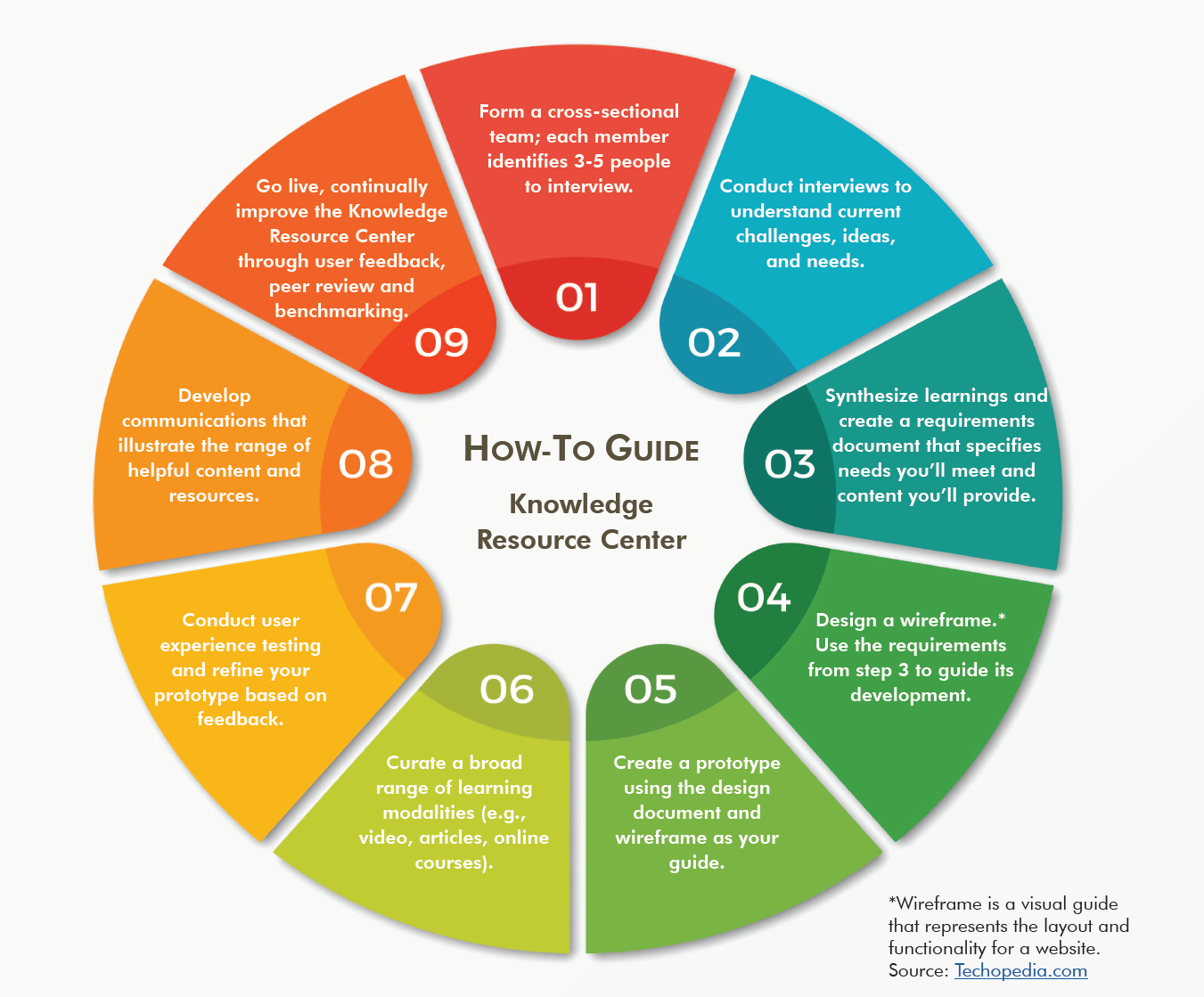Increasing Data Science Adoption
To expedite the adoption of data science and promote the business value of analytics, it can be highly effective to develop a knowledge-sharing website. A Knowledge Resource Center website is often easy to build and scale, and serves as a “digital hub” for people across the organization to access data science best practices and expertise, spark collaboration, and explore tools and resources.
A Knowledge Resource Center site supports data science adoption by enabling rapid information sharing and connecting people with the resources and colleagues they need to be successful. As your company continues to aggregate valuable data, code and models, key learnings, and more, this digital hub increases in value. The site can also be helpful for staff development, supporting different levels of knowledge and skills.
Getting Started on your Knowledge Resource Center
Your objective is to create a knowledge sharing “digital hub” that can be implemented as a prototype within 4-6 months, and is scalable to an entire company. A core design requirement is that the solution will be easily accessible to everyone within the organization, and provide learning paths for users with varying levels of experience.

Key Considerations for your Knowledge Resource Center
User-focused
- Users are at the heart of the Knowledge Resource Center. A key design principle is to understand user needs (current and future) and define requirements that address them.
- User needs vary greatly based on their current level of data science familiarity and expertise.
- Consider developing personas (profiles that represent “typical users”), use cases (scenarios that envision how users may want to use the site), and user journey maps (paths that users may follow to accomplish certain tasks on the site).
- The Knowledge Resource Center is an evolving entity that should grow and adapt based on users’ changing needs and feedback.
Fast Prototype
- Plan the Knowledge Resource Center to be an evolving resource. Iterate and improve!
- Site design, page layouts, and an intranet hosting platform should all enable you to easily add and update content and functionality.
- Consider content publishing options that do not require knowledge of HTML or complex coding.
Curated Content
- Link to internal and external content, including articles, video, shared code repositories, etc.
- List members of the data science community across the organization.
- Refresh content, curate new content, and regularly test links and delete dead links.
- Consider allowing users to contribute content.
Key Insights
- A Knowledge Resource Center accelerates data science adoption by connecting people with information, tools, resources, and internal experts (colleagues who can mentor and guide).
- Learning paths address different skill levels (beginner, intermediate, advanced) and roles (e.g., program managers, supervisors, IT, Legal, HR, Supply Chain).
- Leadership by a cross-functional project team can more efficiently develop successful solutions and implement them.
Quick Tips
To help you get started building a Knowledge Resource Center:
- Use cross-functional teams to create buy-in and address the needs of all stakeholders.
- Keep a user-focused journey in mind to enhance the experience and gain support from all functional areas.
- Accelerate implementation by rolling out fast prototypes, rather than waiting until you have the “perfect” solution.
- Continue to enhance the Knowledge Resource Center’s offerings based on feedback from users, peer review, and newly curated content.
Conclusions
A well-designed Knowledge Resource Center is an excellent way to expedite the adoption of data science. It’s important that the planning, building, and refining process is a collaborative effort across all departments and functional teams, and includes input from people with different levels of experience. Engaging the needs and interests of all stakeholders helps you gain a broad audience and maximize the benefit of this user community.